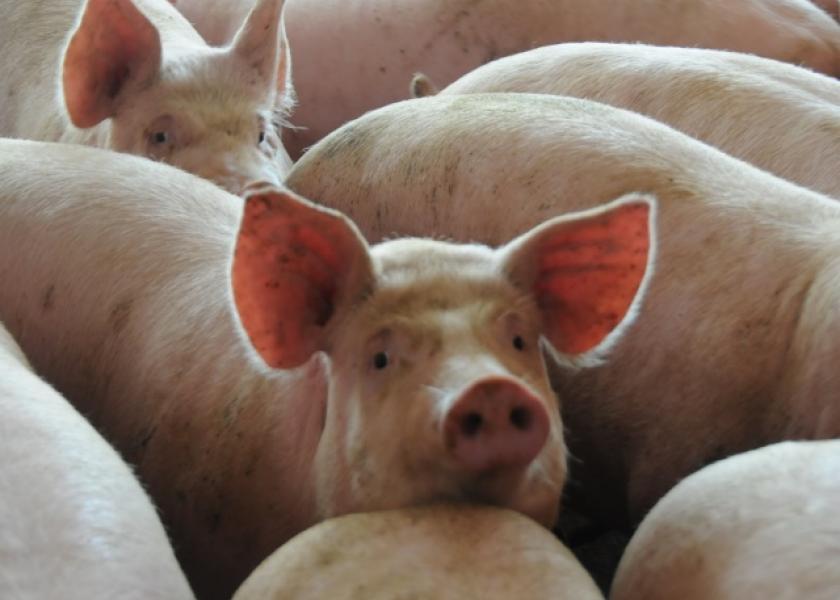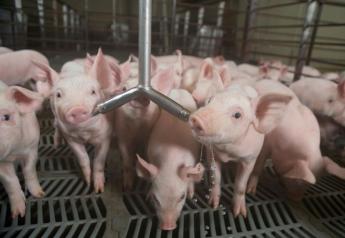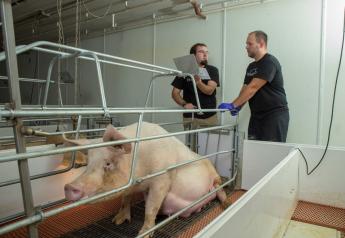Why USDA's June Hogs and Pigs Lighter Litter Numbers Could Ease Slaughter Concerns in Q4

As U.S. pork producers are work to rebuild hog herds, disease pressure proved to be a problem for producers, which could ease potential slaughter issues later this year. Those were the headlines of USDA’s June Hogs and Pigs Report, which showed even though total inventory was down 2% from June 2020, the overall number climbed 1% from the March report.
The Thursday report also shows as of June 1, 2021, 75.7 million hogs and pigs were on U.S. farms, a 2% loss compared to June 2020. It also indicated market hogs and breeding inventory were both down 2%.
*Hear Steve Meyer, consulting economist with National Pork Board (NPB) digest the June USDA Hogs and Pigs Report released Thursday, June 24, 2021.*
One pork industry economist says while the overall numbers didn't send any shocks to the market, there are some key numbers when you dive into the report, indicating a pullback in projected slaughter for the final quarter of 2021.
"When you get down to the details, there are a few interesting numbers here," says Steve Meyer, consulting economist with the National Pork Board (NPB). "I think the two most interesting things are one, the weight categories are almost bifurcated. You have the under 120 pounds down 3% and the over 120 pounds down 1.5%."
Meyer points out that contrasted what analysts expected leading into the report.
"Did the analysts accurately tell us what was in the market? And I don't know, because they had those heavyweight categories down quite a bit," he says.
Other report highlights include:
- Market Hogs: 69.4 million, down 2% from year over year
- Breeding Inventory: 6.23 million, down 2% from 2020
- March-May Pig Crop: 33.6 million, down 3% year over year
- Sows Farrowing Between Sept.-Nov: 3.11 million
As the fresh data shows supplies are slightly growing, Chip Nellinger of Blue Reef Agri-Marketing says the report may have also revealed why prices have been under pressure, with pork cutout values producing a record loss this week, dropping nearly $13 Tuesday.
“I think a couple things stick out at me,” says Nellinger. “Number one was the market-ready hogs— that's 180 pounds and over—were on the high side of expectations. That might explain why we've seen the cash and product market cool just a little bit in a pretty healthy correction in the nearby July futures here.”
*Hear Blue Reef Agri-Marketing's Chip Nellinger give his take on the June USDA H&P Report.*
Eases Q4 Slaughter Concerns
Meyer says while the overall numbers are key, the other big takeaway from the report was not just the pig crop, but the pigs per litter number. He says USDA showed the pig crop at levels lower than what the trade expected, which could also be a result of loss from disease.
"What it really tells me is that the fourth quarter, this pulls our projected slaughter back significantly for the fourth quarter because of those lightweight inventories," Meyer says. "I think they probably reflect some losses from disease challenges over the last quarter, we didn't know how much it would pick up. And that is reflected some in the pigs per litter at 10.95. I thought that would go back up, as did the analysts, they had an 11+ leading into the report. I kind of thought that's where we were headed. So, instead of half a percent larger than last year, it comes in a half percent less."
“The March through May pig crop was lower than the lowest estimate," says Nellinger. "The pigs per litter was on the low side or pegged the low estimate. We've had some issues with the health of the of the herd here for several months. The farrowing numbers are on the low side. And even the September through November farrowing intentions were not at the low estimate, but just about four-tenths of a percent above the lowest estimate."
Meyer says the USDA report showed the March through May pig crop was down 3%, which includes animals that will be slaughtered in September through December, the Q4 timeframe.
"We were pretty concerned about this line speed slowdown that was ordered by the judge in Minnesota in the fourth quarter," adds Meyer. "And this report would indicate that's probably not going to be a problem. That's kind of a surprise to me, because I really expected it would be, but if this minus three inventory on the under 120s [pound market hogs] is correct, we won't have as many hogs in the fourth quarter is what we expected."
Bullish or Bearish Report?
As economists and analysts continue to crunch the latest report numbers, Meyer says the data could be good news for prices to close out the year.
"I think that should be supportive for the fourth quarter prices here," Meyer adds. "It's kind of one of those things where the top line numbers were no surprise at all. But there's details in there that were kind of odd."
As Meyer thinks the report could provide support for hog prices the final quarter of the year, Nellinger thinks it may even give some short-term fuel.
“We could bounce just a touch due to the possibility traders 'buy the rumor sell the fact' type of trade after selling off so hard from the highs over the last two weeks," he says.
Demand Drivers
Now that the June report is out, Nellinger thinks a combination of supply and demand will move the markets going forward, but the bigger story could be demand.
“Whether China is going to be able to build back their hog herd as strong as it was before, that’s a big question,” says Nellinger. “The demand, even at these higher prices, seems to be pretty good. We've kind of reopened domestically and had that surge of demand. We’re back out and going out to restaurants again. I think the demand side is there, but China is going to be such a big player in this. They are really what's going to drive not only our hog market, but all our ag markets: the beef side of the equation, as well as the grains, even cotton and sorghum. China is really going to be the demand story of the 2020s. Right now they have a strong appetite. Will that continue? We just don't know.”
The Star is Domestic Demand
Meyer points out exports have held on better than many analysts expected, but he credits the solid demand story to the domestic market.
"The star here is domestic demand," says Meyer. "Domestic demand has been remarkably strong. And it looks to me like it's hanging in there pretty well. You might remember last year, I said there could be some permanent advantages coming out of consumers doing a lot more comparison of the value of pork to the value of beef to the value of chicken at retail. We were able to put our product in front of them for direct value comparisons. I think we did very well on that. That's one of the reasons that our demand remains very strong now."







